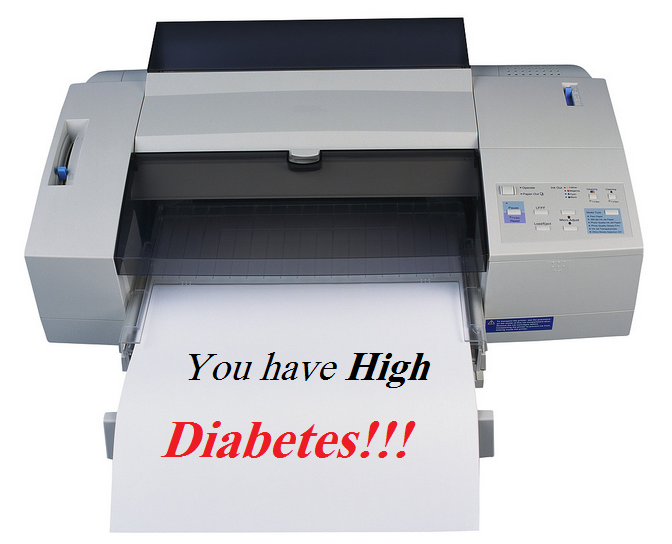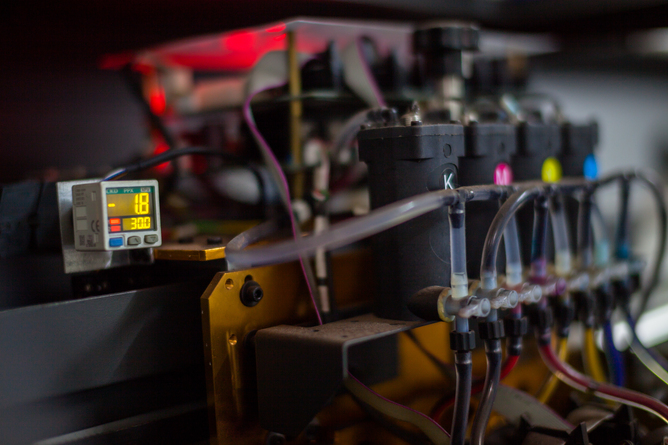Inkjet printer diagnoses diabetes
- Transfer
A group of chemists revealed a feature of an inkjet printer: it can be used as a chemical laboratory to, for example, detect diabetes with high accuracy.
Do you have diabetes and want to find out your blood sugar? Or want to make sure you don't have diabetes? Just turn an inkjet printer into a chemistry lab!

Chemists from Tsinghua University took up this study. According to scientists, an inkjet printer is “an amazing achievement in precision engineering” that can “achieve over a million different shades and colors, including the smallest dots with high precision. These printer specifications are capable of showing millions of different chemical reactions.
Chemist Wufei Zhang noted that every chemical process that occurs in living organisms is controlled by a cascade of reactions. In each of these steps, protein molecules called enzymes are involved. Each enzyme affects its small area. And in this case, the ink in the printer is replaced by these enzymes.

To test the effectiveness of the reactions, the printer was charged with a number of enzymes. Then the results were displayed on paper - so the scientists saw which ratios of which enzymes worked more efficiently.
Then another test was conducted: glucose and a substance called ABTS were placed in a magenta cartridge, glucooxidase in yellow, and horseradish peroxidase in blue. When all the elements were mixed, glucooxidase removed hydrogen from glucose and added oxygen to it, forming hydrogen peroxide. After this, horseradish peroxidase reacted with ABTS, resulting in a green color on paper.
So scientists have already proven that refilling printer cartridges with the right enzymes can show glucose levels. Urine glucose is an indicator of diabetes, so this inkjet printer-based chemical laboratory has the potential to diagnose this disease. Research results were published in the journal Chemical Communications.
Do you have diabetes and want to find out your blood sugar? Or want to make sure you don't have diabetes? Just turn an inkjet printer into a chemistry lab!

Chemists from Tsinghua University took up this study. According to scientists, an inkjet printer is “an amazing achievement in precision engineering” that can “achieve over a million different shades and colors, including the smallest dots with high precision. These printer specifications are capable of showing millions of different chemical reactions.
Chemist Wufei Zhang noted that every chemical process that occurs in living organisms is controlled by a cascade of reactions. In each of these steps, protein molecules called enzymes are involved. Each enzyme affects its small area. And in this case, the ink in the printer is replaced by these enzymes.

To test the effectiveness of the reactions, the printer was charged with a number of enzymes. Then the results were displayed on paper - so the scientists saw which ratios of which enzymes worked more efficiently.
Then another test was conducted: glucose and a substance called ABTS were placed in a magenta cartridge, glucooxidase in yellow, and horseradish peroxidase in blue. When all the elements were mixed, glucooxidase removed hydrogen from glucose and added oxygen to it, forming hydrogen peroxide. After this, horseradish peroxidase reacted with ABTS, resulting in a green color on paper.
So scientists have already proven that refilling printer cartridges with the right enzymes can show glucose levels. Urine glucose is an indicator of diabetes, so this inkjet printer-based chemical laboratory has the potential to diagnose this disease. Research results were published in the journal Chemical Communications.
